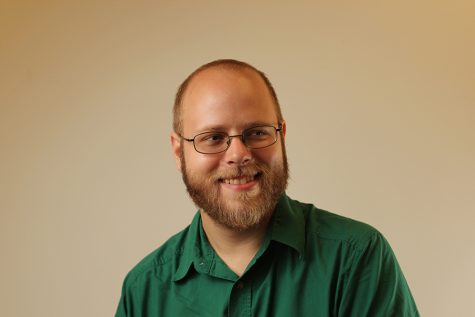Aged buildings, foliage eclipse modern facilities
Funding fails to provide adequate coverage for repairs, landscape
Dec 7, 2016
A large campus, rich with trees and foliage demands a substantial budget for maintenance or it will tend to decay over the years.
A stroll around Contra Costa College reveals grass growing out the top of rose bushes that have grown into rose hedges, and deeply cracked asphalt pathways.
CCC has been under a lot of construction recently through the Campus Center and Classroom Project. While it solved some problems,that isn’t the same as the proactive maintenance that is needed to keep things running smoothly.
“My budget is so low. Almost all I’m instructed to do is to fix things that break,” Buildings and Grounds Manager Bruce King said.
He said, “We’re gradually taking care of things with the (money generated by the Measure A 2002 and 2006)) bonds,” but there is a lot of work that should be done that can’t be seriously considered.
College President Mojdeh Mehdizadeh said, “It’s funny because we see all these shiny new spaces. How could an institution build these beautiful new buildings and not take care of these little things?
“In the bond language it was articulated what that money could be used for,” she said. None of the money generated from the bond measures, that went into the new buildings, can be spent on giving the rest of campus a polish.
The only recent example of proactive maintenance was the cleanup of Rheem Creek in September. Business Services Director Mariles Magalong said an estimate of $10,000 was dedicated to making the section of the creek by the Amphitheater presentable. The creek is no longer choked with weeds and parts which hadn’t been cleared in 20 years.
The cleared section was only about a third of the area of Rheem Creek on campus.
Most of the work that is done doesn’t yield such tangible results. King said, “Since July 1, I must have spent $50,000 cutting back and removing and trimming trees.”
A tree on the other side of the creek fell just a week ago, and broke a branch on the near side by the old Bookstore, he said.
This sort of work isn’t obvious until a fallen tree blocks a path or breaks something.
“I’ve run out of money. I’ve got more dead trees. I just have to hope they stay up for six more months, until I get more budget,” he said.
King said he marked the cracks in the asphalt path through the arboretum with white paint to make them more visible as a stopgap measure until they can be fixed. “Another item on my to do list.”
There are places around campus where maintenance could be combined with improvements, like the muddy slope by the Bus Transfer Center.
The slope has no retaining wall, so it is slowly creeping onto the sidewalk and piling up against the bus stop. The slope is partly caused by the students that frequently walk, or slide, down the slope. Adding stairs would be a major improvement, King said.
King said AC Transit is a tenant of the college. They are responsible for maintaining the area, cleaning up graffiti and fixing sidewalks, so it is possible AC Transit can handle pushing the mud back.
Similarly, there’s a spot in front of the Art Building where people often cut across a patch of dirt, currently a slippery, sloped patch of mud. It’s only a few feet, but if there were a budget for it, a path would be easy to place.
King said, “Watch where people walk and that’s where the pathway should be. You see where people are taking shortcuts, put in paving or something.”
Behind the college by Lot 15, there is a section of curb that seems to have been imported from the Third World. King said 15 to 20 years ago someone crudely mounted asphalt into about the right shape. It aged, and cracked, then someone painted it red. It is ugly and should be replaced with a proper cement curb, but King said it’s a low priority because it doesn’t actually interfere with anything.
Areas like the cracked tennis courts, swimming pool decking and the baseball outfield’s grass are a higher priority. They are at least on the list of things to be fixed, King said.
Mehdizadeh said, “We have to prioritize which ones we address. It’s not feasible to address them all at once.”
Student paths, health and safety are always at the top of the list.
King said, “Anything can be done, but it comes back to money. Money drives decisions.
“I have the least staff and the lowest budget of any school in the (Contra Costa Community College District), and not by a little — like half.”
His budget is based on the college’s budget which is based on CCC’s Full-Time Equivalent Student count. Mehdizadeh said sister colleges Diablo Valley College has two and a half times CCC’s count, and Los Medanos College has one and a half times.
“You want to have pride in your institution and part of that is aesthetic,” Mehdizadeh said. But rosebushes with grass sticking out the top just aren’t critical to student success.


